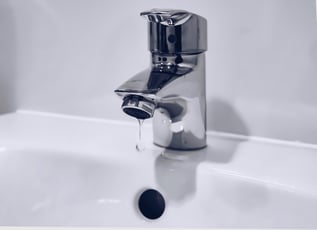Reasons Why Your Water Pressure May Be Too Low
Are you getting frustrated when you go to take a shower or wash your hands and the water pressure is far too low? Typically, water pressure in homes should be between 45 and 55 psi but can safely rise to 80 psi without causing damage to internal plumbing. Low water pressure can stem from a variety of causes, most of which homeowners can take care of, but there are situations that do fall outside of their control.
An example of an uncontrollable source of low water pressure is when a water main breaks or other issues arise within a municipal water source. This can be confirmed when an entire neighborhood or street is experiencing low water pressure, too. However, others can be identified and repaired by owners or a professional plumber, and we’ll discuss those issues here.
An Excess of Household Demand for Water
If you are running too many applications that call for water at the same time, this could result in low pressure if the home doesn’t have an adequate supply to support the usage. An easy way to resolve this issue is to run fewer devices concurrently. For example, running the dishwasher, washing machine and shower simultaneously can easily exceed what the typical home water system can support.
result in low pressure if the home doesn’t have an adequate supply to support the usage. An easy way to resolve this issue is to run fewer devices concurrently. For example, running the dishwasher, washing machine and shower simultaneously can easily exceed what the typical home water system can support.
Fixture and Water-Using Appliance Problems
Over time, the minerals and other matter that is present in water supplies will gather in fixtures such as shower heads and faucets. As they accumulate, this will slowly start to restrict water flowing through the fixtures. This can also clog lines in devices themselves, making a cleaning of these fixtures necessary to restore full flow.
Shutoff Valve Problems
When opened, the main water shutoff valve allows water into the home. When closed or partially closed, it can restrict water flow. There are also several individual valves that connect to specific fixtures such as sinks. If low flow is experienced in a single area, check that valve. If the entire home is affected, check the main valve to ensure it’s fully open.
Pressure Regulator Problems or Undersized Branch Lines
Pressure regulators are optional in plumbing systems that aim to stabilize water pressure. If a malfunction occurs, water pressure can be too low or too high. Branch lines are the lines that feed the fixtures in various areas of the home. Undersized branch lines may not be big enough to deliver adequate water, which results in water pressure that’s too low. A plumber can install wider lines to increase water flow and pressure.
Corrosion and Clogs Within Pipes
Clogs and corrosion are two primary issues that can affect the supply pipes, which can result in water pressure that is too low. Mineral deposits can build up over time in piping, just like in fixtures. As the debris accumulates, clogs form that can limit the amount of water that flows through it. Old pipes that are metal can corrode with age and will also cause blockages in the lines. Calling a plumber is best when dealing with this situation.
Need Help Resolving Low Water Pressure?
Here at Pilot Plumbing, we handle commercial and residential plumbing in the Greater Montgomery County area. If you have low water pressure, let our experienced technicians diagnose the source and offer solutions. Contact Pilot Plumbing online or call us at (936) 788-6829 today.
